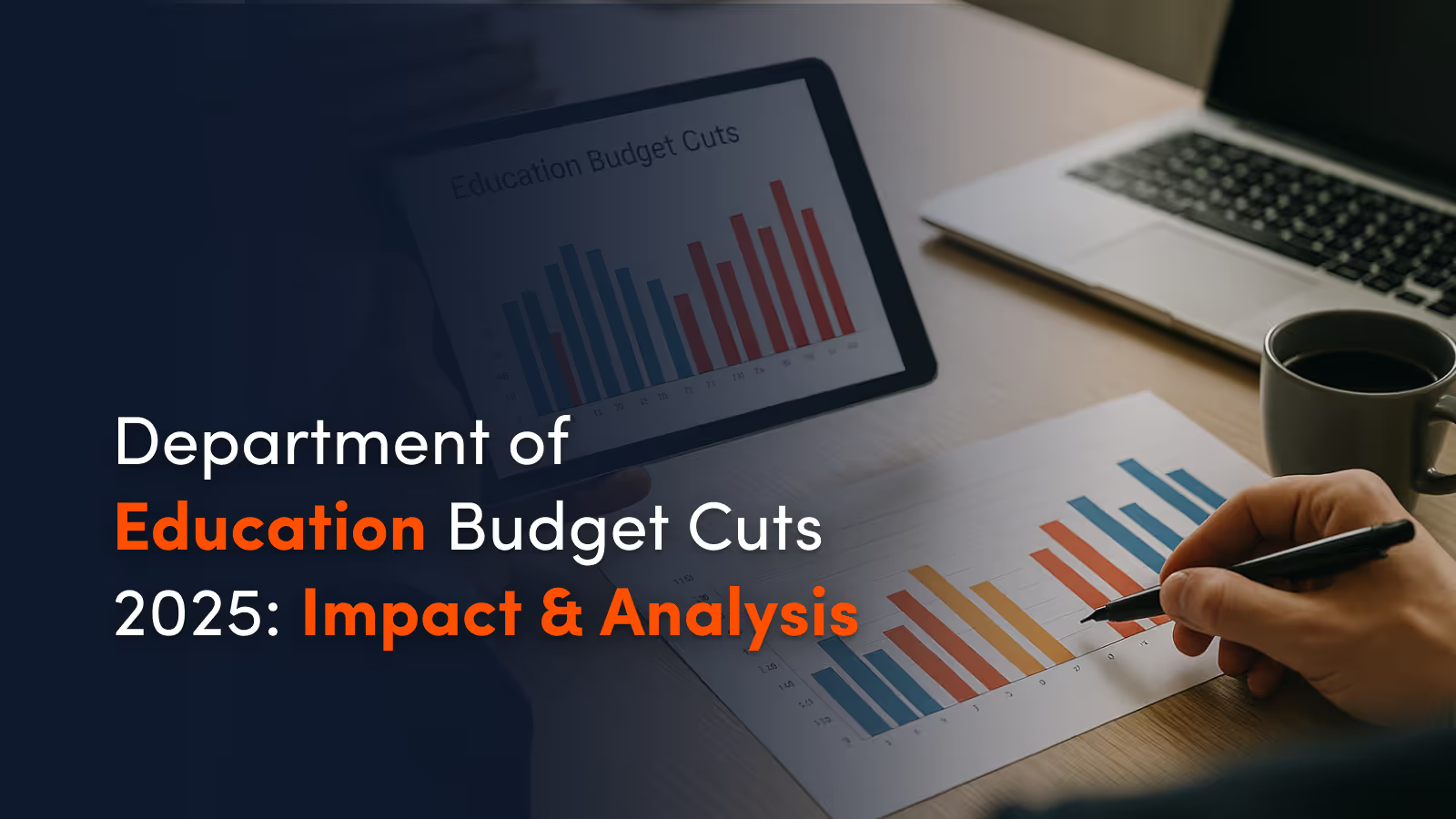About the Blog
Key Takeaways
- The 2025 Department of Education budget cuts reduce federal funding for K–12, higher ed, and special education programs.
- Public colleges and universities face a squeeze on Pell Grants, research dollars, and student support services.
- Budget cuts worsen inequities, disproportionately affecting rural, low-income, and disabled students.
- Schools and communities can counteract some losses through state funding shifts, local levies, and targeted grants.
Introduction
In 2025, the Department of Education faces significant budget cuts following the latest federal spending bills and debt ceiling negotiations. These reductions—part of the 2024–2025 budget cycle—signal major changes for students, educators, and institutions nationwide. With finalized changes now impacting everything from K–12 staffing to Pell Grant availability, it's crucial to understand what’s at stake for education in America.
As institutions adapt to this new reality, these shifts also intertwine with broader trends in higher ed in 2025 and higher education policy shifts.
Why Are These Cuts Happening?
The Department of Education’s 2025 budget cuts are driven by a convergence of political and fiscal forces. Rising national debt, debates over the debt ceiling, and shifting political priorities following the 2024 elections pushed lawmakers to tighten federal spending. Education, despite its foundational role, became a target for trimming discretionary spending.
Recent congressional budget reports underscore a desire to "balance fiscal responsibility" with "essential services," but many experts warn that the consequences will reverberate for years.
Who’s Affected and How?
The impact of these cuts spans every corner of the education system—but not evenly.
K-12 Schools
K–12 schools are seeing immediate effects: fewer staff, cut enrichment programs, and tighter resources for basic supplies.
Higher Education
Public colleges and universities are bracing for leaner budgets, especially around Pell Grants, federal research funding, and support services for underrepresented students. With tuition costs rising, cuts to federal aid could make access even harder for many students. To understand how institutions are adapting, you can explore our deep dive into higher ed analytics, where data-driven strategies are helping colleges stretch limited resources.
Special Education
Special education programs funded under IDEA (Individuals with Disabilities Education Act) are also in the crosshairs. Funding gaps are expected to strain staffing for support roles like speech therapists and special education aides, increasing caseloads and stretching services thinner. For disabled students, the underfunding means not just fewer resources—but critical legal protections becoming harder to fulfill.
The Ripple Effects of Budget Cuts
Student Outcomes and Learning Loss
Cuts often lead to larger class sizes, outdated learning materials, and fewer intervention programs, widening achievement gaps and contributing to long-term learning loss.
Teacher Retention and Burnout
Teacher unions, including the National Education Association (NEA), have sounded the alarm: budget cuts accelerate teacher attrition. When resources dwindle, workloads rise, morale drops, and educators leave the profession, further destabilizing schools already struggling to recruit.
Inequity and the Urban-Rural Divide
The divide between affluent and underserved communities grows sharper with each budget reduction. In one example, suburban districts have turned to private fundraising while rural districts, lacking similar resources, have been forced to cut after-school programs and elective courses.
This stark contrast highlights the urgent need for more equitable solutions, especially as schools navigate not just budget shortfalls but also evolving trends in technology in education.
What Can Schools and Communities Do?
Despite these challenges, there are ways to respond:
- State-level funding shifts: Some states are increasing their own education budgets to fill federal gaps. For instance, Michigan recently approved a $900M increase in K–12 funding.
- Local ballot measures and levies: Districts are passing local taxes to secure additional revenue for critical programs.
- Federal grants: Programs like the Emergency Connectivity Fund and the Innovative Approaches to Literacy Program offer targeted support that districts can pursue.
What’s Next for Federal Education Funding?
The story isn't over. In late 2025, Congress is expected to revisit education funding as part of the broader budget reconciliation process. Depending on political shifts post-2024 elections, new investments—or further cuts—could be on the horizon. Key dates include the September 2025 budget review and the December end-of-year funding negotiations.
Conclusion
The 2025 Department of Education budget cuts mark a pivotal moment for American education. Reduced funding across K–12, higher ed, and special education will reshape access, outcomes, and equity for years to come. It’s more important than ever for educators, families, and advocates to stay informed, get involved, and push for sustainable investments in the future of learning.
Frequently Asked Questions
How do state education budgets differ from the federal budget?
State education budgets primarily fund public schools and colleges, while the federal budget supplements targeted programs like Title I and Pell Grants.
Can schools sue the government over education funding cuts?
While rare, schools and advocacy groups can file lawsuits if they believe federal funding cuts violate constitutional rights or federal education laws.










